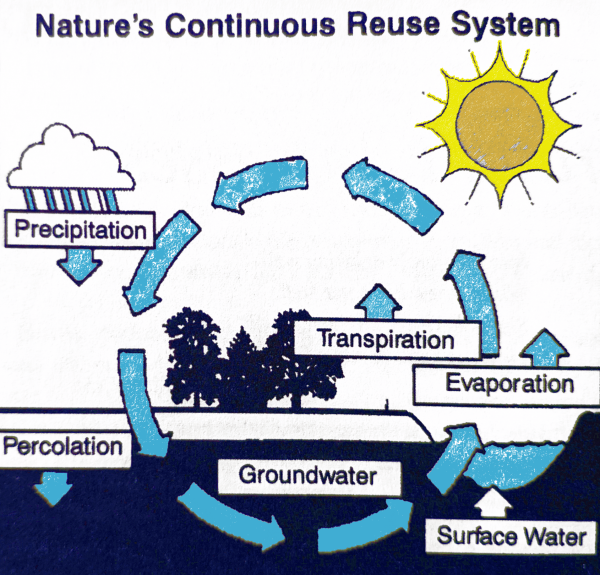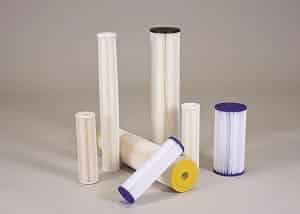Filtration Processes
Filtration Processes
Natural Filtration Process
The filtration process can be viewed as one of the most understood techniques in water treatment. The basic principles of separation/filtration have been working in our environment for eons. As shown in the image below, part of the filtration in the hydrologic cycle takes place by water seeping and percolating through layers of earth. After the water has made it through the layers of dirt and becomes surface water, the absorbed gases and particulates are primarily removed from the water.

The Hydrologic Cycle
Water falls to the earth through precipitation. Which then percolates through the earths soil, filtrating unwanted particles and evaporating gasses by the time it reaches the surface. Then in turn, recycles up into the atmosphere beginning the cycle over again.
As the image above shows, nature’s way of clarifying a turbid (cloudiness and discoloration of particles) stream as it flows through layers of earth’s surface is a classic example of filtration in action. Through world’s history there have been recordings of this type of filtration as well as boiling water to enhance the purity.
Screen and Depth Filter Filtration Process
A common method of filtration involves water passing through a bed of granular of porous media. For example, coated paper, membranes, and other special fabrics. This passing of water removes undissolved suspended particulates. When the particulates have turbidity caused by silt, sand, solid organic matter, precipitated iron, bacteria, or algae a well-designed tank filter is capable of removing these suspended solids from the water. It can be filtered down to a roughly a 10.0 micron size. Particles smaller than 10.0 micron can be clustered together into larger, more filterable flocs with the help of coagulants such as aluminum sulfate (alum). Effective coagulation can remove particles down to one micron in size.
To remove these particles that are not seen from the naked eye, special membrane-type material is used in cartridge-like filters. In this screening out technique, two filtration processes are used. See the image below for reference. The first filtration process requires the removal of species in the 0.06-2.00 micron range. The second filtration process is the ultrafiltration membrane method, which removes particles of the 0.025-0.200 micron range. This process also rejects dissolved macromolecules above 1,000 molecular weight cutoff.

On a larger scale, filtration processes do involve a variety of equipment, mechanics, chemicals, media products, and devices to filtrate particles from fluids. Industrial, municipal, and specialized commercial water treatment facilities can use one or more of the following processes.
- -Simple strainers, sieves and filter presses
- -Chemical- coagulation/precipitation
- -Granular media (gravity, pressure, or vacuum filters)
- -Centrifugation
- -Precoat filters
- -Cartridge-type filters
- -Membrane technology

Key Terms
Turbidity – When particles result in discoloration and cloudiness. Examples of particles causing turbidity could include, solid organic matter, finely divided silt, sand, bacteria, algae, or precipitated iron.
Percoloation – the process of a liquid slowly passing through a filter.
Transpiration – the process of water movement through a plant and its evaporation from aerial parts, such as leaves, stems and flowers.
Particulates – microscopic particles of solid or liquid matter

